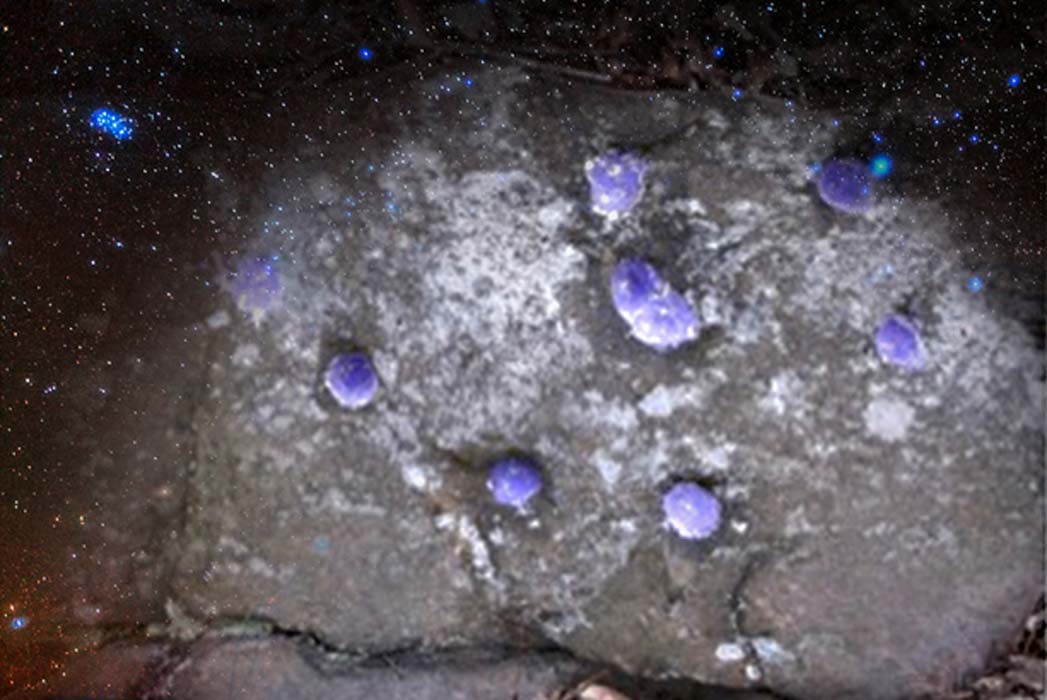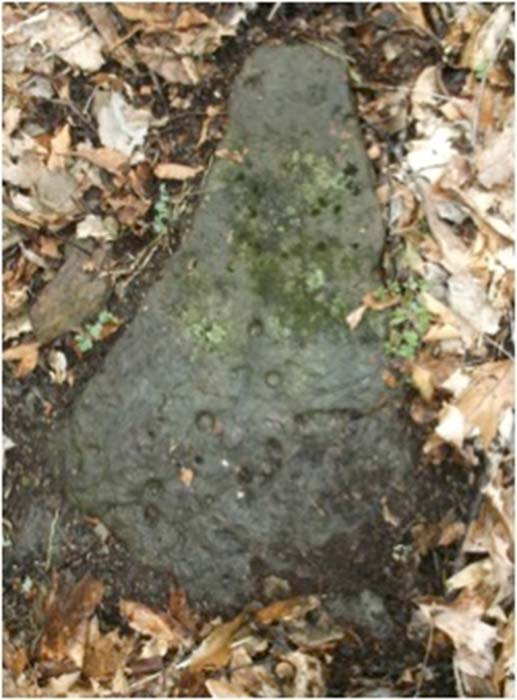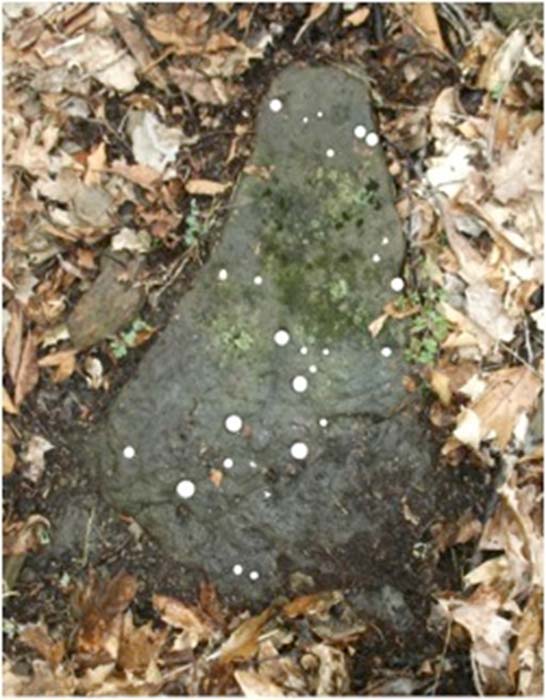
Foundations of Stone – Part II : Investigating the Megalithics of West Virginia and the Connection to the Pleiades
Returning to the Charleston area, one crucial detail of the earthworks omitted from Cyrus Thomas’ published report is the existence of a series of “graded ways” which connected the earthworks on both sides of the Kanawha, which can be seen in Norris’ original survey map of the works presented in the 5th Annual Bureau of Ethnology Report. These “graded ways” were composed of “fired stones” mixed with clay and ashes, creating an elevated pathway varying from 25 and 35 feet (7.6 to 10.6 meters) wide. Marking the crossroads or “forks” of these sacra via, or sacred roads, were megaliths featuring cup marks.
Cup Marked Stones
Several mounds of the Charleston works featured these cup marked stones. Along the Elk River North of Charleston, Norris excavated a conical mound 50 feet (15 meters) broad and five feet (1.5 meters) high, the top of which was strewn with “flat rocks mainly bearing one or more circular holes from 1 to 2 inches in diameter and nearly as deep similar to the cavity in the larger end of an egg shell”. The fill of the mound featured more cup marked stones, until three feet (one meter) from the top of the mound a burial was found in a “rude stone slab coffin”. Also, within mound 31 at Charleston, Norris uncovered a hemispherical mortar two feet (0.6 meters) in diameter across the top “burned red and crumbly, filled with white ashes containing small fragments of bones burned to cinders”. The top of the mortar was covered by a three inch (7.6 cm) thick piece of sandstone, which featured a “hemisphere hole near 2 inches broad” near the center (described by Thomas as a “cup-shaped depression”).
Attempting to relocate the enclosure near St Albin in the 12th Bureau of Ethnology Report on foot, several rediscoveries were made. This site once included many notable Adena features, including a graded way that was “fully 20 feet wide, somewhat rounded in the middle, and rather higher than the natural surface.” It is noted that the lower side of the graded way was essentially sustained by or propped up with a line of flat stones. A few small pits from Norris’ previous excavations were found in the area, numerous small cairns, and a triangular-shaped stone, much like the ones described at Charleston by Hale and Norris. The triangular stone was approximately two and a half to three feet (0.7 to 0.9 meters) in length and less than two feet (0.6 meters) in width at its base. It was covered with small cup marks, varying in size from approximately half an inch to an inch (2.5 cm):

A triangular shaped stone found near Coal River

Cup marks noted for better visibility
Cup marked stones or slabs near burials have been added to the Adena taxonomy in North America and are documented at the C&O Mounds, the original Adena Mound, and the Coon Mound. A series of eight large, cup marked stones were found beneath the large Wright Mound in Kentucky, one of which featured 23 cups. Elsewhere in West Virginia, cup marked stones were found piled on top of timber burial chambers in the Grave Creek Mound, a large “single pitted” megalith was found on a hilltop near the Natrium Mound, and several pitted stones were reported as surface finds at the Half Moon Mounds.
- The Giants of Doddridge County: Burials of a Vanished Race – Part I
- The Giants of Doddridge County: Body Snatching and Buried Notebooks – Part II
- The Adena Giant Revealed: Profile of Prehistoric Mound Builders
The presence of cup marked stones are also a little known feature of Late Neolithic/Early Bronze Age burial mounds in Atlantic Europe. William Greenwell describes a barrow from Yorkshire:




